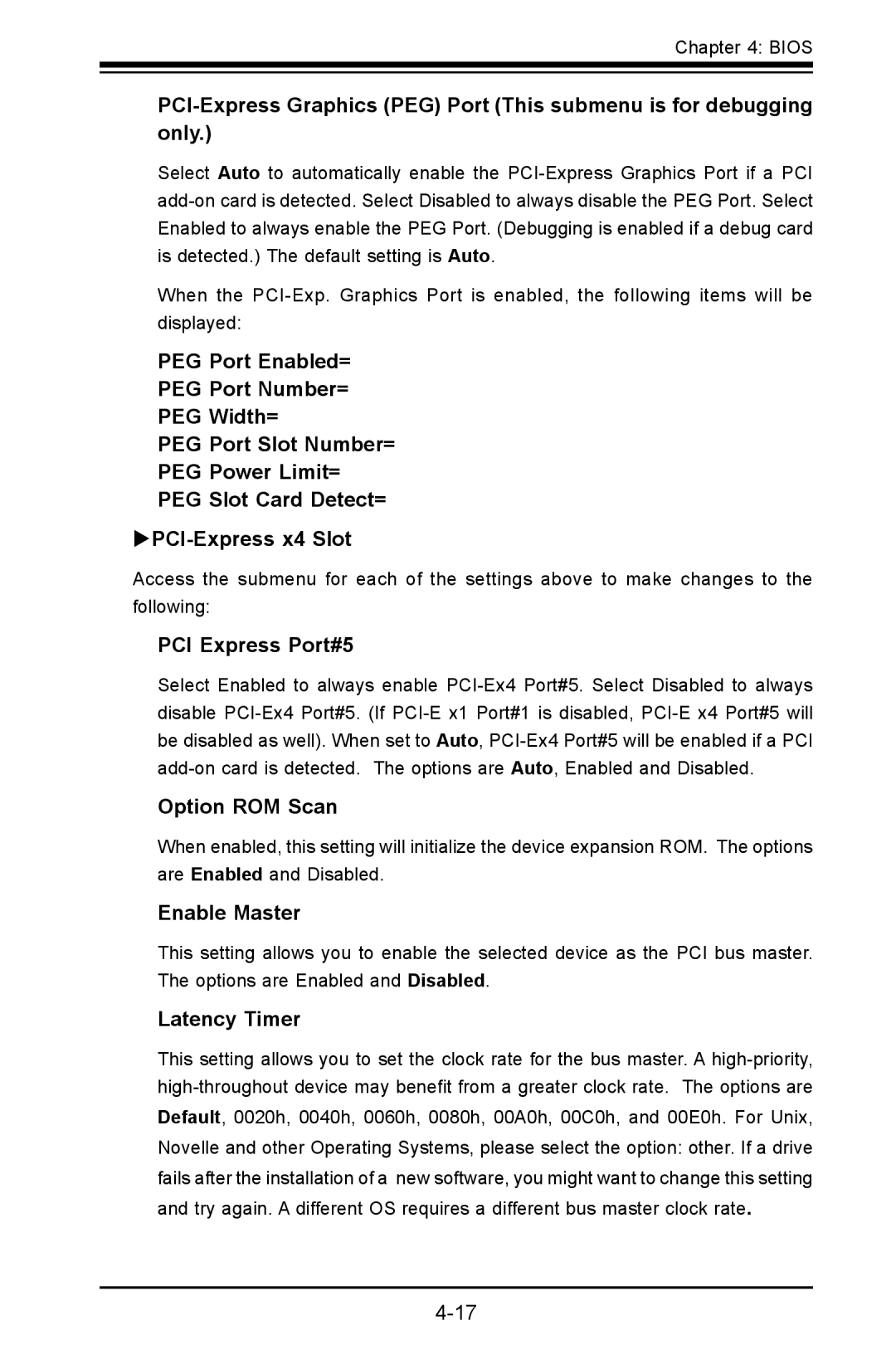
Chapter 4: BIOS
Select Auto to automatically enable the
When the
PEG Port Enabled=
PEG Port Number=
PEG Width=
PEG Port Slot Number=
PEG Power Limit=
PEG Slot Card Detect=
Access the submenu for each of the settings above to make changes to the following:
PCI Express Port#5
Select Enabled to always enable
Option ROM Scan
When enabled, this setting will initialize the device expansion ROM. The options are Enabled and Disabled.
Enable Master
This setting allows you to enable the selected device as the PCI bus master. The options are Enabled and Disabled.
Latency Timer
This setting allows you to set the clock rate for the bus master. A
Novelle and other Operating Systems, please select the option: other. If a drive fails after the installation of a new software, you might want to change this setting and try again. A different OS requires a different bus master clock rate.
